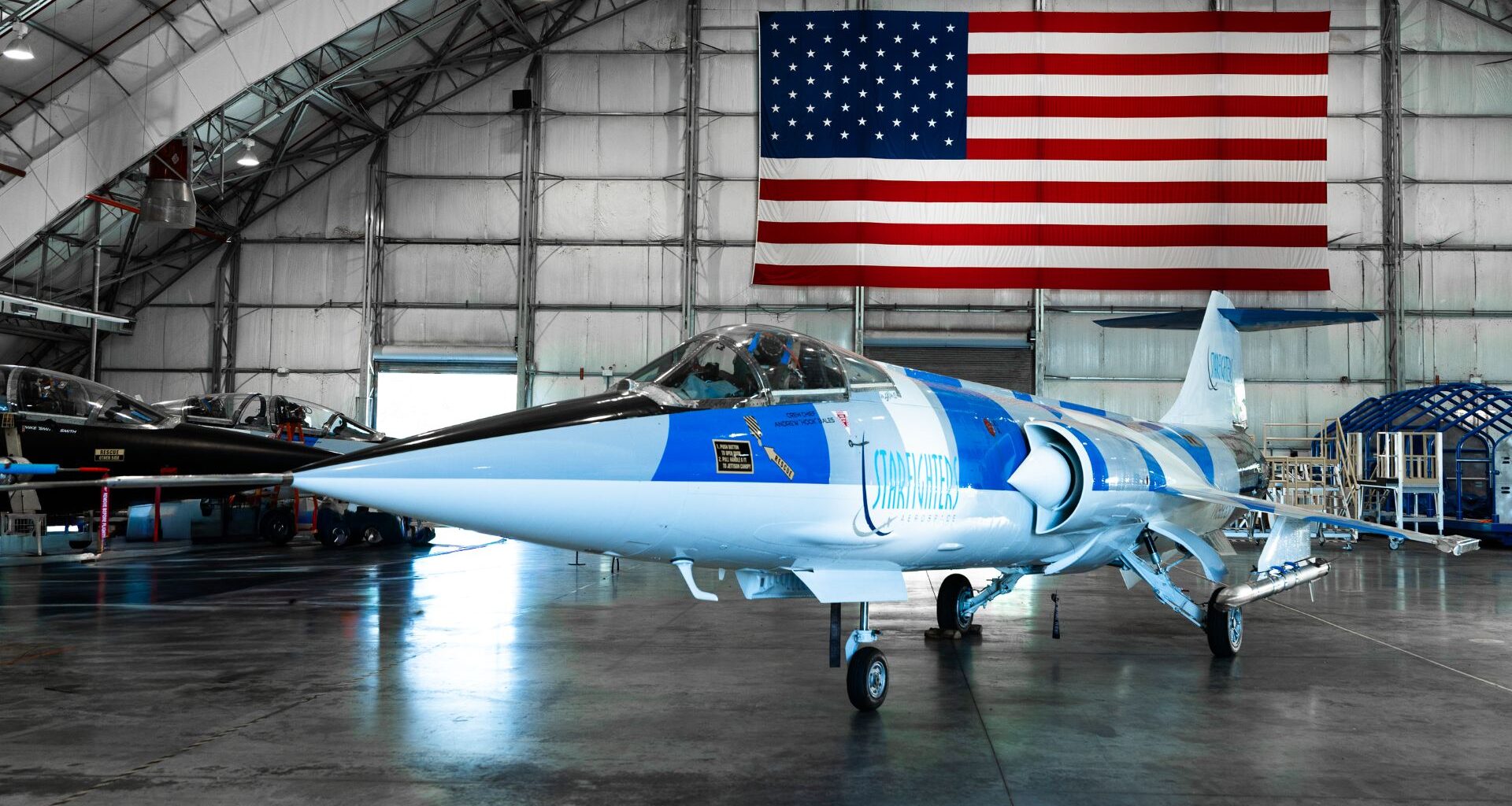GE Aerospace announced on September 22 that it has completed supersonic captive carry flight tests of its Atmospheric Test of Launched Airbreathing System (ATLAS) Flight Test Vehicle.
The milestone took place at the Kennedy Space Center in Florida and marks an important step in advancing solid fuel ramjet (SFRJ) propulsion technology.
During the test campaign, the ATLAS system was carried on a Starfighter F-104 aircraft. According to the company, the system successfully reached supersonic speeds across three flights.
The company confirmed that the results validated the in-flight performance of solid fuel ramjets.
“This marks a pivotal moment for GE Aerospace as we showcase our solid fuel ramjet technology in flight for the first time,” said Mark Rettig, vice president & general manager of Edison Works Business & Technology Development at GE Aerospace.
“Captive carry testing of reusable flight test hardware allows for more frequent testing in realistic atmospheric conditions to better understand system behavior.”
Pentagon-funded development
The project is funded through Title III of the Defense Production Act, with support from the Pentagon. The goal is to scale up air-breathing propulsion technology to extend the range of future munitions.
The aviation firm said the data collected from the ATLAS program will be valuable for designing next-generation systems requiring higher speed, longer range, and better responsiveness.
The company is investing in multiple high-speed and hypersonic propulsion technologies as part of its broader defense strategy.
Expanding hypersonic portfolio
The aerospace giant has been expanding its capabilities in this field over the past few years. In 2022, the company acquired Innoveering, a firm specializing in hypersonic propulsion systems.
Earlier this year, GE also announced upgrades to its testing infrastructure at facilities in Ohio, New York, and Niskayuna. These improvements allow mission-relevant, higher-Mach testing at a scale that was not possible before.
Alongside the ATLAS announcement, the company revealed successful demonstrations of two rotating detonation combustion (RDC) engines at its Aerospace Research Center in Niskayuna. The tests involved a missile-scale ramjet and a dual-mode ramjet designed for high-speed aircraft.
Rotating detonation combustion advances
The RDC tests demonstrated robust performance and showed a threefold increase in engine airflow compared to earlier hypersonic demonstrators. “We’ve proven that GE Aerospace’s rotating detonation combustion designs are scalable,” said Rettig.
“In just 10 months, our team advanced from its legacy ramjet to a 3X scale demonstrator with RDC. This rapid progress underscores the maturity of our technology and the strength of our roadmap toward integrated high-speed propulsion solutions.”
RDC technology allows fuel and air to combust through detonation waves rather than conventional combustion methods. This enables higher thrust and efficiency while reducing engine size and weight. Testing began in July at the firm’s continuous flow propulsion facility.
The work was made possible through collaboration between GE Aerospace engineers, the acquired Innoveering team, and the company’s research center. These milestones build on GE’s 2024 achievement, when it took a dual-mode ramjet from concept to testing in less than a year.
GE Aerospace’s Edison Works division continues to drive innovation in defense propulsion and systems.

